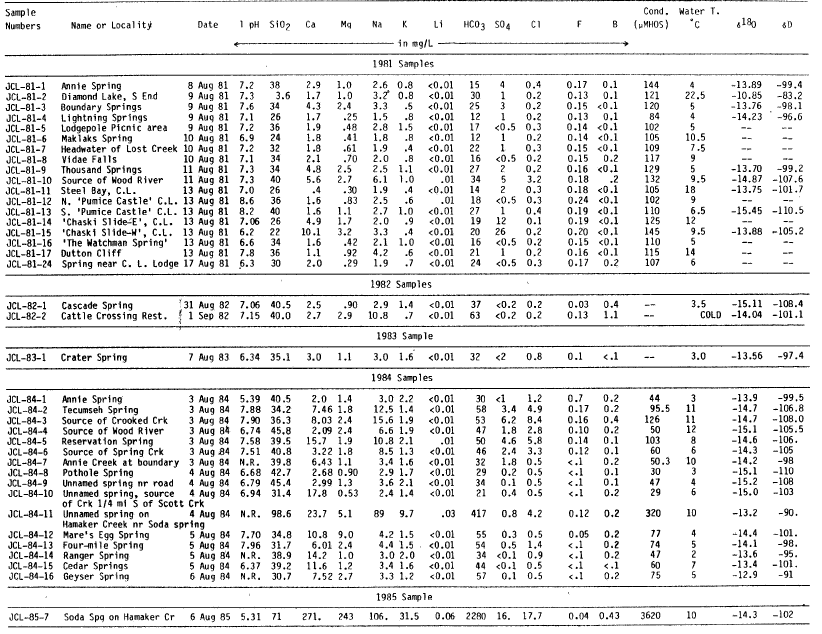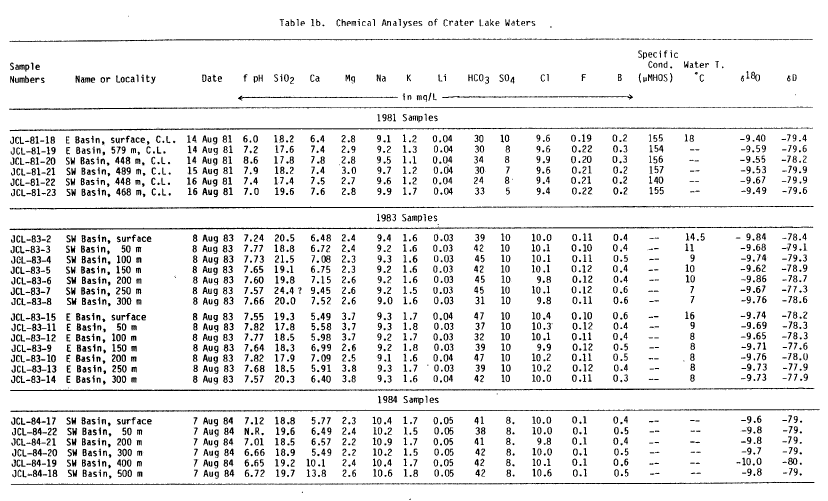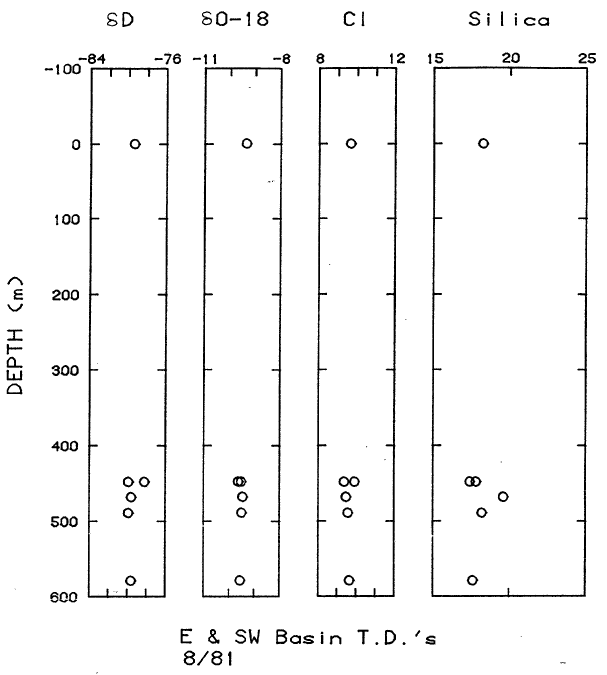The anomalous constituents in Crater Lake led Van Denburgh (1968) to the interpretation that the enrichment of Cl and SO4, and perhaps SiO2 and Na, “… may have been contributed to the lake by thermal springs or fumaroles …” This suggestion, which is supported by the heat flow data of Williams and Von Herzen (1983), has caused much controversy. However, if the interpretation of Williams and Von Herzen’s heat flow data is correct, it provides a mechanism for the relatively uniform chemical and isotopic composition of the lake, namely Rayleigh convection. They reported a Rayleigh number of 6.3 x 1014, whereas 1000 is sufficient to initiate convection.
 |
| Table la. Chemical Analyses of Springs in the Vicinity of Mount Mazama |
 |
| Table 1b. |
 |
| Figure 5. Isotope and chemical data for Crater Lake for surface and total depth samples in 1981 in the east and southwest basins. |

